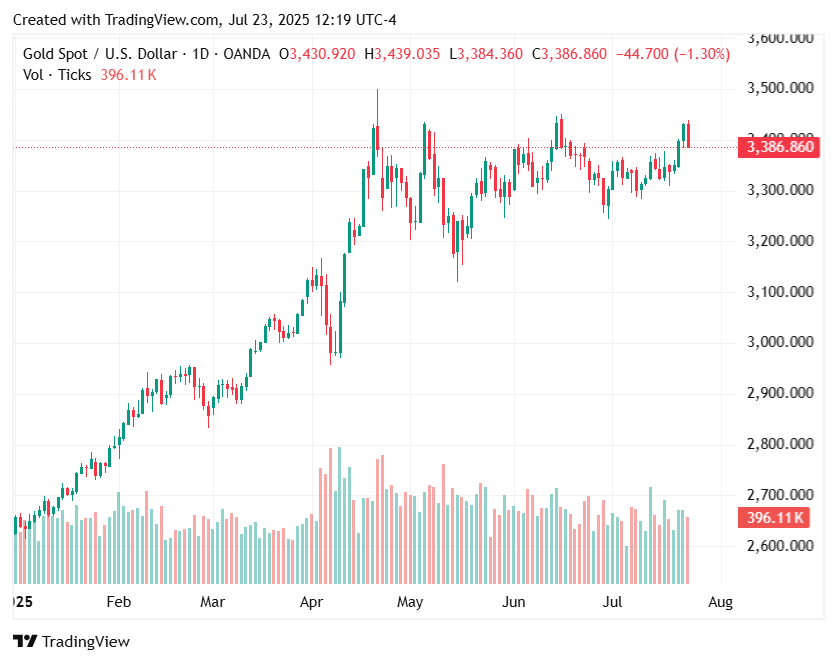Gold price drops as trade concerns ease, while silver price rallies
Posted Under Commodity News, On 23-07-2025
Source: mining.com
Gold prices dipped after a three-day rally on Wednesday, as a US-Japan trade deal allayed trade war concerns and dampened demand for safe haven assets.
By midday, spot gold fell 0.6% to $3,410.26 per ounce, having hit a five-week high the previous session. US gold futures also declined 0.6%, trading at $3,420.90 per ounce in New York.
The pullback follows a series a trade deals announced by the Trump administration in recent days, most notably a better-than-expected deal struck with Japan on Tuesday evening.
“Trade deals like the one between the US and Japan mitigate macroeconomic concerns and may dampen safe haven demand. This could lead to a continuation of the recent push and pull in (gold) prices,” Nikos Tzabouras, senior market analyst at Tradu.com, told Reuters.
However, the longer-term prospects for gold remain favourable, he added, citing mounting concerns over US debt that may exacerbate de-dollarization trends, leading to higher gold holdings by central banks.
So far this year, gold has climbed about 30% amid uncertainty surrounding US President Donald Trump’s attempts to reshape global trade, prompting investors and central banks to accumulate bullion.
In late April, the precious metal hit an all-time high of $3,500, before consolidating within a tight range during the ensuring months.
Silver continues to soar
However, gold’s performance is trumped by that of silver, which has soared nearly 36% year to date.
Unlike gold, silver is mostly used as an industrial input. As a result, higher projected demand from sectors such as solar could propel silver prices higher even in absence of the safe-haven draw.
Evidently, spot silver rose by as much as 0.4% to $39.54 an ounce Wednesday — the highest since 2011.
“The recent rally in silver is being driven by a combination of strong industrial demand, persistent supply deficits, and increased investor interest,” said Alexander Zumpfe, a precious metals trader at Heraeus Metals Germany.
“A decisive push past $40 could come from a further breakout in gold prices, renewed weakness in the US dollar, or signs of deeper supply tightness – especially if physical premiums start to rise again in key Asian markets.”
In recent days, there has been evidence of market tightness in the London market, after nearly half a million ounces flooded into US warehouses on tariff fears, according to Bloomberg.
Exchange data shows that the cost of borrowing silver metal has jumped above historical norms, while growing exchange-traded fund holdings further erode the amount of metal freely available to buy.
(With files from Bloomberg and Reuters)


